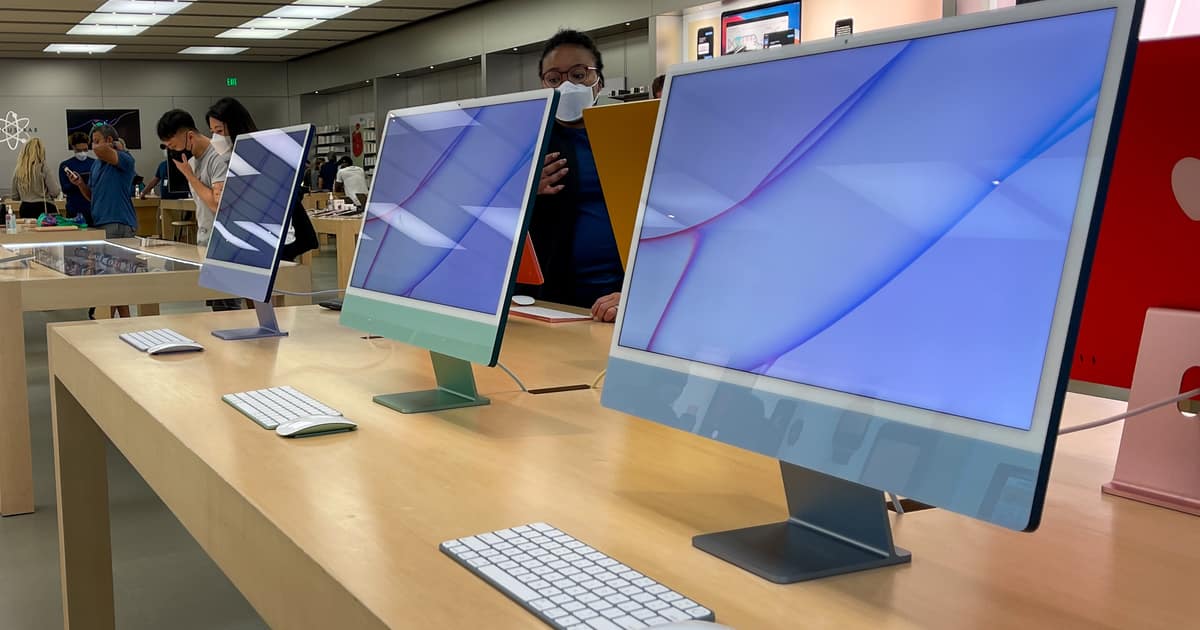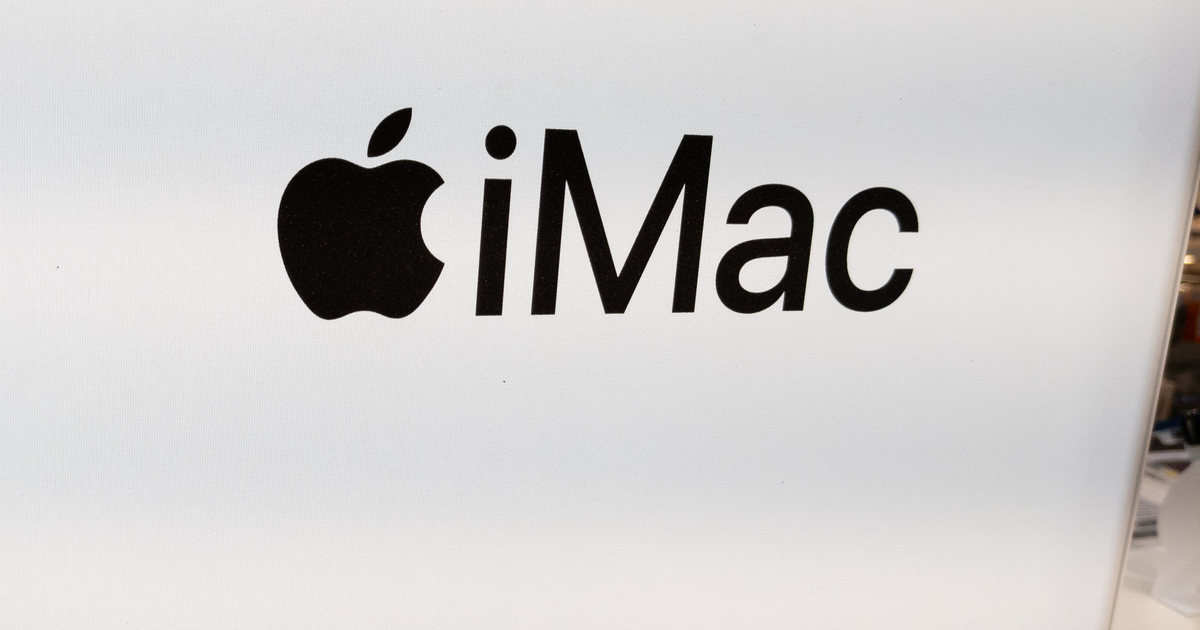At the end of Tuesday’s media event, while ogling the new product pages for the Mac Studio and Studio Display, watchful observers noticed one product missing. Without any fanfare, Apple discontinued the 27-inch iMac.
A Faltering Product Line?
The iMac has always seemed to be a popular offering for desktop users. However, several models have come and gone over the past few years. In 2021, the Cupertino-based company replaced its 21.5-inch iMac with a 24-inch model. Then, it killed off the 27-inch iMac Pro, which boasted an Intel Xeon processor.

Now, some believe Apple may have replaced the last 27-inch iMac with its Mac Studio and Studio Display pairing.
There Is Still Hope for a New 27-Inch M1 iMac
Near the end of his introduction to the Mac Studio, Apple’s senior vice president of Hardware Engineering John Ternus suggested the Mac Pro is the last of Apple’s computers yet to make the transition to M1. Many suppose that means there won’t be a 27-inch M1 iMac.
On the other hand, Ternus may have meant the Mac Pro was the last existing Mac to transition to Apple Silicon. Since Cupertino had already discontinued the 27-inch iMac at the time of the event, it technically was no longer an existing product.
It truly doesn’t make sense for Apple to think its new Mac Studio could take the place of a 27-inch iMac. After all, just the base model of the Mac Studio and the Studio Display would carry a $3600 price tag. Cupertino always seems to think two steps ahead, so there could be a different replacement for the discontinued model already waiting in the wings.
Bloomberg’s Mark Gurman took it that way. The reliable journalist suggested Apple is still planning for a new 27-inch iMac Pro running an M1 chip. We may find in June that Apple returns to the 27-inch desktop all-in-one with a completely new model.
Tech commentator Steve Troughton-Smith seconded that thought. Evaluating Apple’s current desktop product matrix, Troughton-Smith pointed out there is still a gap wide enough between the 24-inch iMac and the Mac Studio to make room for a 27-inch Pro all-in-one.

Jeff:
The ultimate fate of the 27” iMac is anything but clear, despite many a credible Apple observer declaring it dead.
TC concluded his wrap up with that now multi-entendre declaration, ‘We cannot wait to see what our customers will do with these new products’. I’ll bet they can’t.
Amongst those observations will be not simply uptake, but willingness to upgrade. One of the metrics economists use when assessing the likely uptake of a new product is ‘willingness to purchase’ and is the subject of both survey data prior to release AND observational data upon release by analysing the demographics of purchasers and non-purchasers, in turn leading to modelling the viability of those products and to whom these are targeted.
A recent case study is the iPad Pro. In 2018 the most popular model was the 11”, which introduced many of the new features of that product line. The 12.9” was simply a larger variant. In 2021, only the 12.9” variant had the XDR display, with all other features identical across the product line. Apple observed that a sizeable fraction users in the market for the iPad Pro (they’ve never released actual figures insofar as I know) were willing to upgrade to the larger, more expensive model (including yours truly). Not only did that year’s 11” never get that display, this uptake spawned credible rumours of a yet even larger iPad Pro in the works.
As @davehamilton points out, Apple appeared to compare the M1-Max Studio to the 27” iMac and the M1-Ultra Studio to the Mac Pro, both of which the Studio substantially outperforms (and outperforms the soon-to-released 12th Gen Intel Alder Lake CPU https://youtu.be/Y-5bSDkxW7k). Apple, no doubt, have already done their pre-marketing analysis, and are now set to analyse the user uptake data including demographics, use-case, and will assess the ‘force of upgrade’ from the iMac user base. If the force is strong with the Studio, then the 27” iMac is well and truly dead. If the force is weak, then like Spock, its Katra can be restored to its familiar all-in-one form. For now, the 27” iMac is a Schrödinger’s cat.
Apple will likely also use these data to refine their demand projections for the Mac Pro, whose fate they appear to signal is an open question. My guess is that a Pro is in the works, and like the Studio, will be even more over-powered and high-end than anything we’ve seen before or available anywhere else in the industry, and will be aimed at a specific and limited market.
In sum, one hidden meaning in TC’s ‘we cannot wait’ statement is that the uptake Force is with us, the user base.
Apple should release a decent-poweful standalone Mac ($1,000) with a decent 27-inch retina display that can flip for landscape and vertical viewing ($1,000). Matte display, please, but not nano-textured, which is awful. Total of $2,000 and no more than $5,000.
Just sad.
24-inch is too small for someone used to the 27-inch iMac.
Studio + Studio is $4500 which is way more than an iMac.
While I hope you are correct that the 27-inch iMac makes its transition to Apple Silicon, I’m not convinced. As we recorded yesterday’s Mac Geek Gab and were dissecting this, I was trying to sort out the point of the Studio Display. The price is fine (given that the far-less-feature-filled LG 5K Screen is only a few hundred dollars less), but my question was more about the target consumer for the Studio Display.
What professional in an actual “studio” needs a display with speakers or an A13 chip in it? It would seem to me that most studios would already have good speakers installed, and other than spatial audio and Center Stage, I’m not sure what the point is of paying for an A13 chip. The LG display looks exactly as good (I presume it’s similar glass), and has ports, etc. Most studios are going to be perfectly-served by the LG 5K display.
And then it hit me: that Studio Display is for people who are replacing a 27-inch iMac. It has all the things someone would want in an all-in-one setup. Pair that with either a “low end” Mac Studio or even an M1 Mac mini, and boom, you’ve replaced your iMac perfectly.
Indeed, Apple’s comparison charts for the M1-Max-Based Mac Studio were comparing it to the 27″ iMac. Those comparison charts throughout yesterday’s event were very informative (M1-Ultra-based Mac Studio vs. Mac Pro, iPhone SE vs. iPhone 8, etc).
As soon as I realized all this together, I started coming to the conclusion that the 27″ iMac may be no more. At least not for a few years. 😉
You may be right, but I hope you’re not. I look at the pricing for the 27-inch iMac, which started at $1799. The Studio Display alone is $1999. Now maybe, just maybe, someone might replace an Intel 27-inch iMac with the Studio Display and an M1 Mac mini. You’re still looking at a starting price of $2698. It doesn’t really make sense.
On the other hand, all of the references to a product John knew was discontinued do throw a bit of confusion into the mix.
I’ve always felt that the iMac Pro was never a permanent machine. It was a stop gap until they could release the MacPro. They never updated it. I’m convinced that this new set up is replacing the 27” 5K iMac. Seriously, they couldn’t figure a way to make this an all in one? What’s missing now is a larger screen M1 iMac. Maybe a 27” but sans the 5K. What I find interesting is for years people have wanted this mythical xMac. A box with a stand alone display, basically fitting in between an iMac and a Mac Pro. Well here it is. Essentially a 5K iMac in two parts.
This is not the mythical xMac people dreamt about. That was a cheap midsize Mac with modularity and expandability galore which would allow its techie proponents to scratch their tinkerers’ itch. Well after years of clamoring, Apple did finally release a midsized Mac but no surprise, Apple grants wishes in the most peculiar ways.